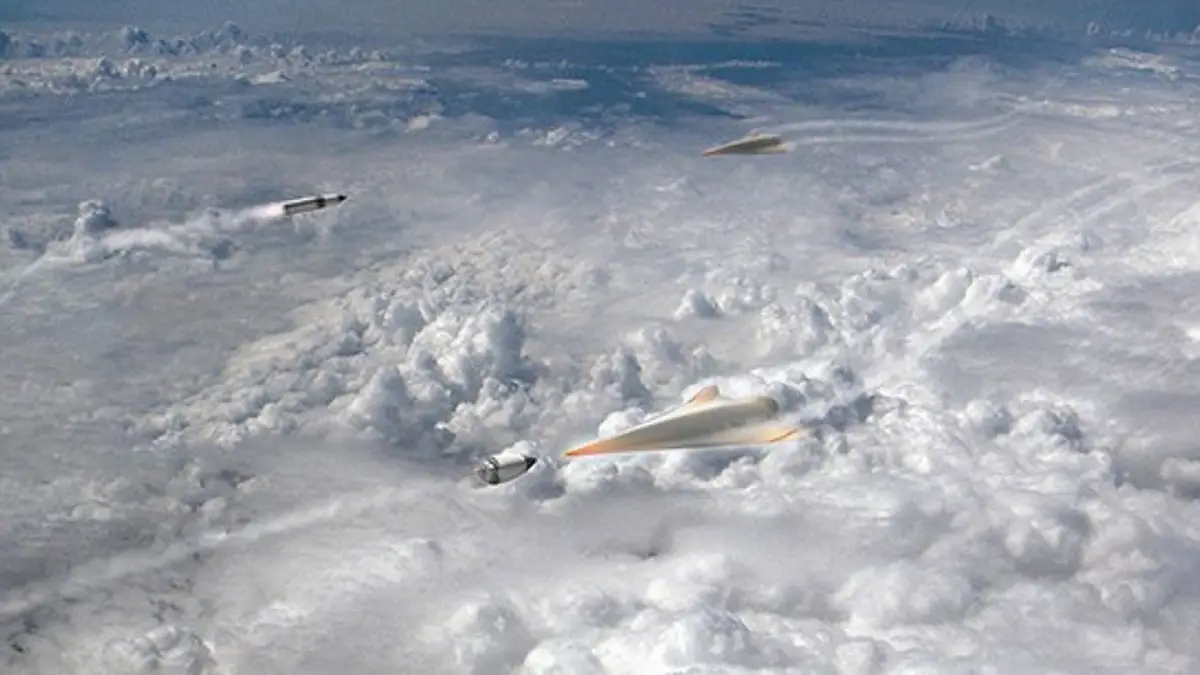Boeing will develop and test technologies for a hypersonic interceptor prototype for DARPA’s Glide Breaker program as part of a four-year effort. Boeing will perform computational fluid dynamics analysis, wind tunnel testing and evaluation of aerodynamic jet interaction effects during flight tests. Glide Breaker is intended to inform the design and development of future hypersonic interceptors, which could destroy a threat traveling at least five times the speed of sound in the upper atmosphere during what’s known as the “glide phase” of flight. The Boeing-led development and testing will provide the foundation for future operational glide-phase interceptors capable of defending against these sophisticated and evolving hypersonic threats.
As the threat of hypersonic weapons continues to grow, one of the Pentagon’s top research and development arms is moving ahead with a new project to explore ways to guard against them. The Defense Advanced Research Projects Agency’s (DARPA) Glide Breaker project will look into various “component technologies” needed for one or more defense systems, but will focus heavily on a hard-kill interceptor to knock the fast-flying weapons out of the sky. DARPA showed off concept art of the interceptor portion of Glide Breaker for the first time at its D60 Symposium, which honors the organization’s 60th anniversary, in September 2018. The agency’s Tactical Technology Office had previously hosted a gathering to explain the project and its requirements to interested parties in July 2018.
“Hypersonic vehicles are among the most dangerous and rapidly evolving threats facing national security. We’re focusing on the technological understanding needed to further develop our nation’s counter-hypersonic capabilities and defend from future threats. This phase of the Glide Breaker program will determine how factors like hypersonic airflow and firing jet thrusters to guide the vehicle affect system performance at extreme speed and altitude in a representative digital environment. We’re operating on the cutting edge of what’s possible in terms of intercepting an extremely fast object in an incredibly dynamic environment,” said Gil Griffin, executive director of Boeing Phantom Works Advanced Weapons.
DARPA has successfully initiated “Breaker” programs, including Assault Breaker and Tank Breaker, which have laid the technological foundations for fielded military capabilities. Some of DARPA”s efforts supporting the development of critical technologies related to hypersonic boost-glide systems can be seen in their Tactical Boost Glide (TBG) program. TBG is a joint DARPA/U.S. Air Force (USAF) effort that aims to develop and demonstrate technologies to enable future air-launched, tactical-range hypersonic boost-glide systems. In a boost-glide system, a rocket accelerates its payload to high speeds (usually hypersonic or greater than Mach 5). The payload then separates from the rocket and glides unpowered to its destination.















